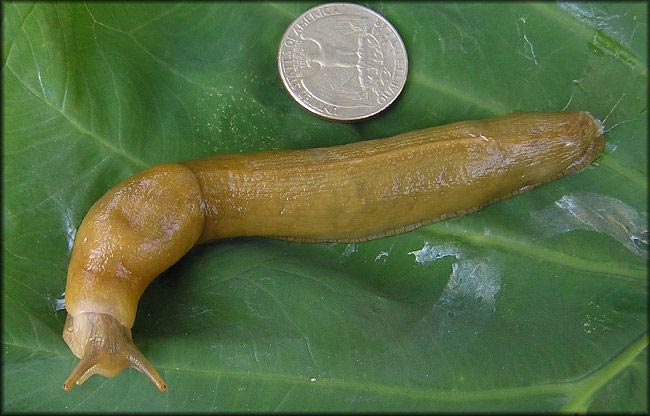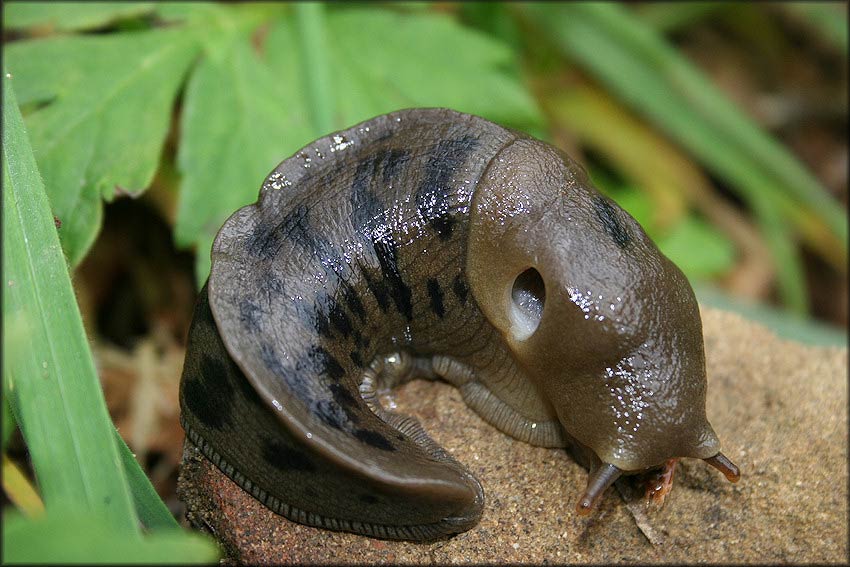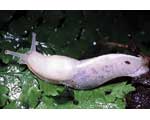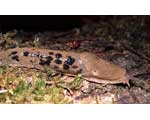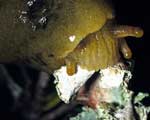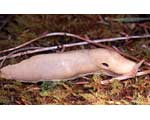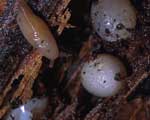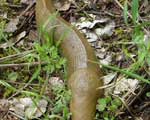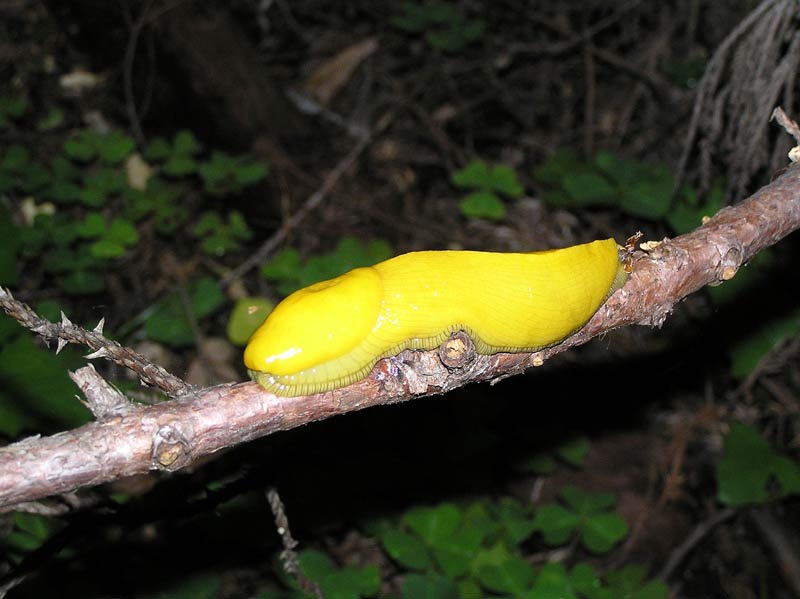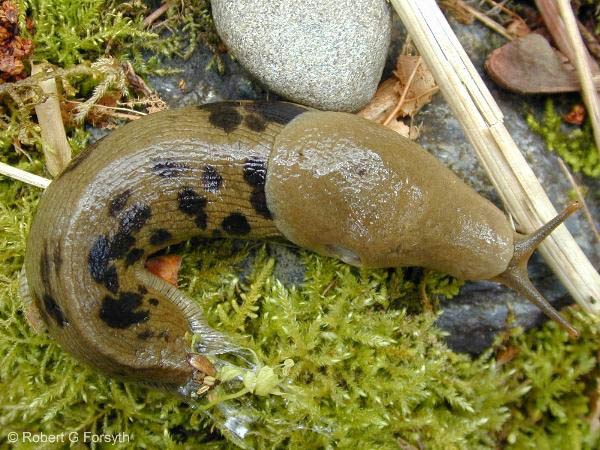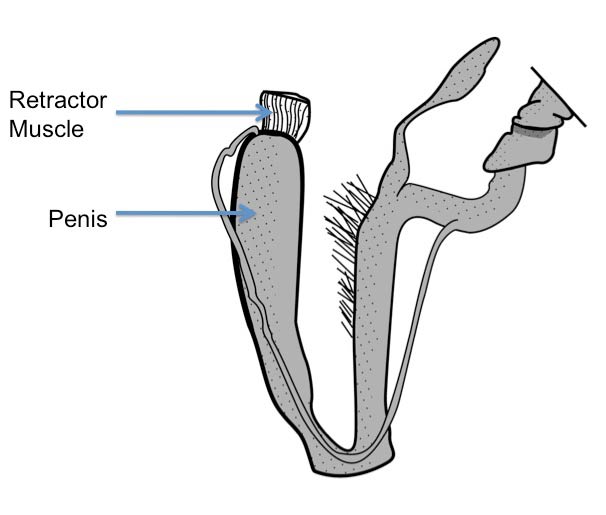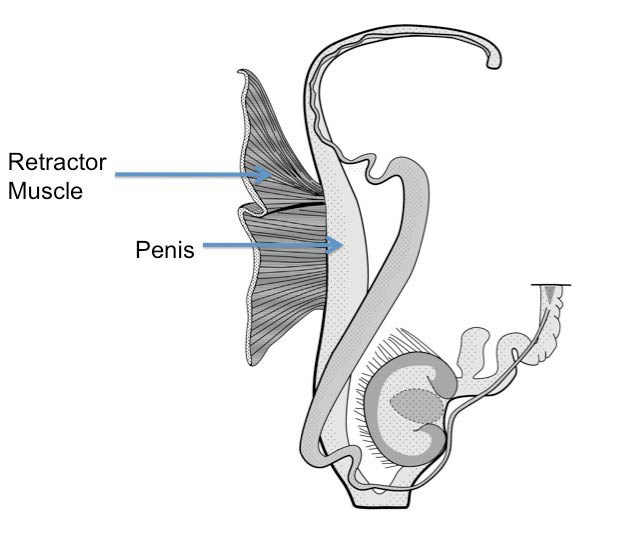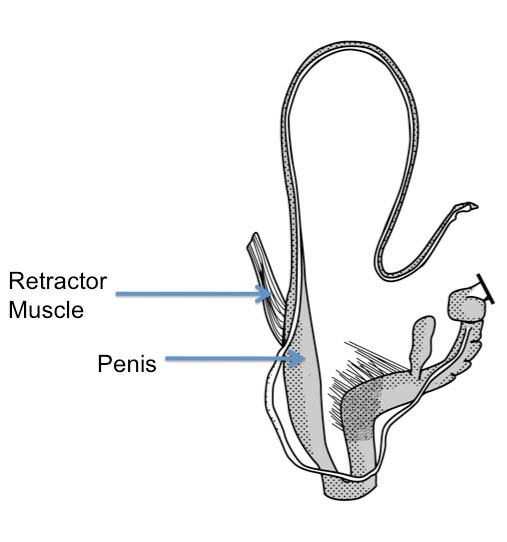Ariolimax columbianus
|
Ariolimax columbianus. (Photo: © B. Frank, Jacksonville) |
|
Ariolimax columbianus. (Photo: © B. Frank, Jacksonville) |
|
Ariolimax columbianus. (Photo: © K. Ovaska, CalPhotos) |
|
Ariolimax columbianus. (Photo: © K. Ovaska, CalPhotos) |
|
Ariolimax columbianus. (Photo: © K. Ovaska, CalPhotos) |
|
Ariolimax columbianus. (Photo: © K. Ovaska, CalPhotos) |
|
Ariolimax columbianus. (Photo: © 2001, William Leonard) |
|
Ariolimax columbianus. (Photo: © 2004, Susan Prince) |
|
Ariolimax columbianus. (Photo: © 2005, Bon Terra Consulting) |
|
Ariolimax columbianus. (Photo: © R. Forsyth, Smithers, BC, Canada) |
|
Ariolimax columbianus: genitalia. (Photo: © Mead 1943 modified by K. Weigel, University of Florida) |
|
Ariolimax californicus: genitalia. (Photo: © Mead 1943 modified by K. Weigel, University of Florida) |
|
Ariolimax dolichophallus: genitalia. (Photo: © Mead 1943 modified by K. Weigel, University of Florida) |
Family
Arionidae
Species
Ariolimax columbianus (Gould, 1851)
Common name
Pacific banana slug
Description
This robust slugSlug:
A snail that either does not possess a shell or has one that is very reduced (no definite coiling) or internal.
can attain a length of 185 to 260 mm and may weigh up to 72 g at maturity. This species is normally yellow in color; however, several color morphs exists, that range from white to tan-green, red-brown, brown-green, olive green, slate green and ochre yellow. The mantleMantle:
A fleshy, membranous covering of the anterior portion of the body of a mollusc. It secretes the materials that form the shell.
and body of the slugSlug:
A snail that either does not possess a shell or has one that is very reduced (no definite coiling) or internal.
is usually of uniform color; however, the mantleMantle:
A fleshy, membranous covering of the anterior portion of the body of a mollusc. It secretes the materials that form the shell.
in any of the color morphs may possess dark-brown to black spots, while the body remains a uniform color. In some specimens, this pattern is reversed and the body possess spots that are not present on the mantleMantle:
A fleshy, membranous covering of the anterior portion of the body of a mollusc. It secretes the materials that form the shell.
. In some specimens, the black blotches occur simultaneously on the mantleMantle:
A fleshy, membranous covering of the anterior portion of the body of a mollusc. It secretes the materials that form the shell.
and body and may even coalesce to give the slugSlug:
A snail that either does not possess a shell or has one that is very reduced (no definite coiling) or internal.
a solid black. The juveniles of this species are finely speckled. This slugSlug:
A snail that either does not possess a shell or has one that is very reduced (no definite coiling) or internal.
has a caudal mucus pore with the pneumostomePneumostome:
This is the breathing hole on the right side of the mantle of molluscs. This allows air to pass through to the lung for gas exchange.(See also breathing pore).
(breathing pore) located behind the midpoint of the often finely granulated mantleMantle:
A fleshy, membranous covering of the anterior portion of the body of a mollusc. It secretes the materials that form the shell.
. The keelKeel:
Also known as the carina. This is a longitudinal ridge that runs dorsally along the apex of the tail of the animal.
appears undulating in strongly contracted individuals and does not reach the mantleMantle:
A fleshy, membranous covering of the anterior portion of the body of a mollusc. It secretes the materials that form the shell.
. The sole of the footFoot:
The muscular organ on the undersurface of the body of a mollusc upon which the animal rests or uses to crawl.
is usually much wider than the body.
Slugs in this genus are similar in appearance; however, they can be separated based on the following genitalic characters:
A. columbianus: The penis permanently evaginated, and the apicalApical:
Top side of the shell; opposite of base.
portion is rounded/blunt. The retractor muscle is narrow and strap-shaped, and originates on the apexApex:
The tip of the spire of a shell.
of the penis.
A. californicus (Cooper, 1872): The penis forms a hollow tube and can be completely invaginated. The apicalApical:
Top side of the shell; opposite of base.
portion of the penis is slender and is 1 to 1 2/3 times the length of the basal portion. The retractor muscle is broadly flabellate, and originates close to the apexApex:
The tip of the spire of a shell.
of the penis.
A. dolichophallus (Mead, 1943): The penis forms a hollow tube and can be completely invaginated. The apicalApical:
Top side of the shell; opposite of base.
portion of the penis bears a flagellum that is 2 to 4 times the length of the basal portion. The retractor muscle is narrow and strap-shaped, and the point of origin is not at the apexApex:
The tip of the spire of a shell.
of the penis. This species may also be aphallicAphallic:
The state of lacking a penis.
(does not have a penis).
Native range
North America:
- U.S.: Alaska, California, Idaho, Oregon, Washington
- Canada: British Columbia
Distribution
North America:
- U.S.: Alaska, California, Idaho, Oregon, Washington
- Canada: British Columbia
Ecology
The Pacific banana slugSlug:
A snail that either does not possess a shell or has one that is very reduced (no definite coiling) or internal.
can be found inhabiting humid coastal forests. They often are intercepted when they attempt to cross trails. This is not a pest species; however, it is commonly intercepted and may be mistakenly classified as a pest due to its large size. They are infamous for gnawing off their mating partner's penis after copulation. Oval eggs (about 5 x 8 mm) are typical of this species. The eggs are laid in clutches in the soil from autumn to early spring, maturing after three to eight weeks. The slug's diet includes fungi, feces and carrion of other slugs, and detritusDetritus:
Disintegrated organic material e.g. decaying leaves.
and necroticNecrotic:
Dead or dying tissue. Often brown to black in color.
vegetation. It has been noted that A. columbianus displays homing behavior.
Synonyms
- Limax columbianus Gould 1851, in Binney,Terr. Moll. U.S., 2:43, pl. 66, fig. 1; 1852, U.S. Expl. Exped. Moll., p.3, pl. 1, fig. 1.
- Ariolimax columbianus Gould, Morch, 1859, Malak, Blatter, 6:110; W. G. Binney, 1865, Amer. Jour. Conch., 1:48, pl. 6, figs. 11-13.
- Ariolimax columbianus var. maculatus "Cockerell", Binney, 1890, Third Suppl., Bull. M.C.Z., 19: 211, pl. 6, figs. A, G.
- A. columbianus forma typicus and forma maculatus, Cockerell, 1891, Nautilus, 5:31; forma niger, 5:32 (All form British Columbia).
- A. subsp. Californicus forma maculatus Cockerell, 1891, Nautilus, 5:31, foot-note; 1897, Nautilus, 11:76. (No locality given).
- Aphallarion buttoni Pilsbry & Vanatta, 1896, Proc. Acad. Nat. Sci. Phila., p. 348, pl. 12, figs. 3, 4, 5; pl. 13, fig. 4; pl. 14, fig. 11, 12.
References
Anderson 2005Anderson 2005:
Anderson, R. 2005. An annotated list of the non-marine Mollusca of Britain and Ireland. Journal of Conchology 38: 607-637.; Boycott 1934; Kerney et al. 1979Kerney et al. 1979:
Kerney, M.P., R.A.D. Cameron and G. Riley. 1979. A field guide to the land snails of Britain and North-west Europe. Collins, London. pp. 288.

